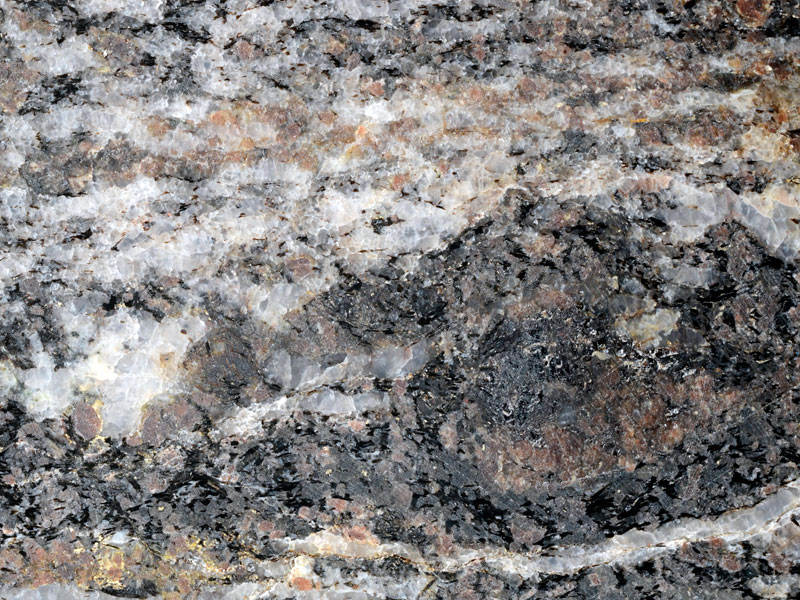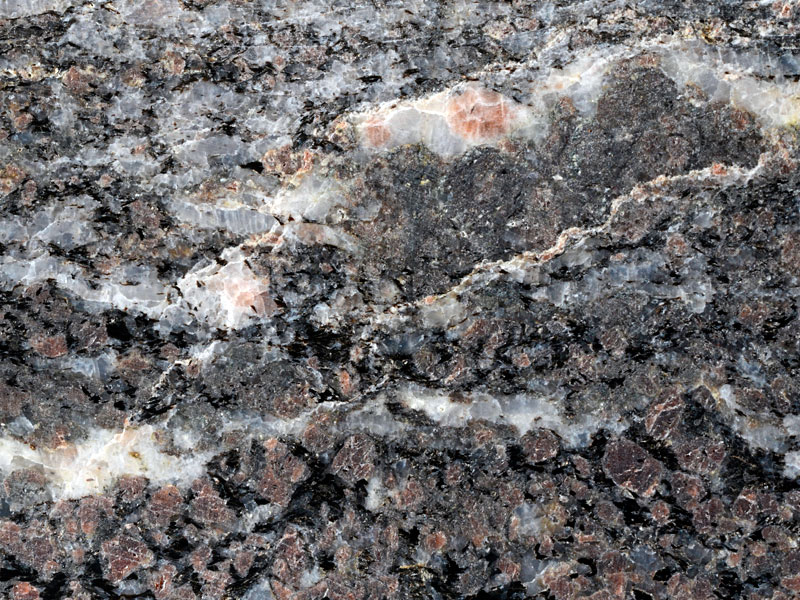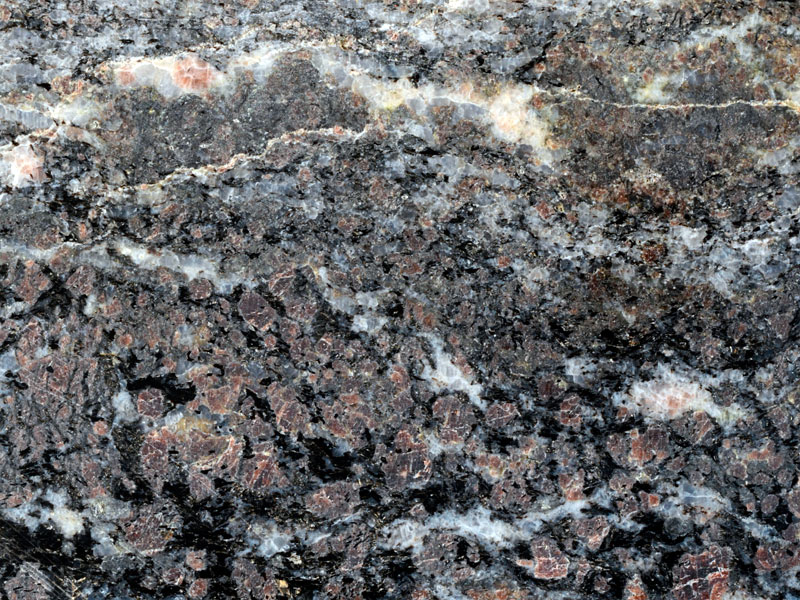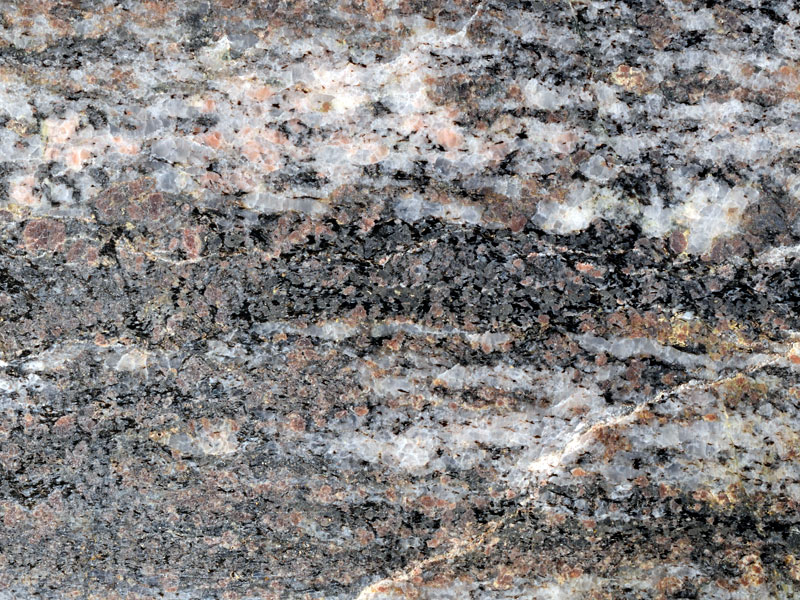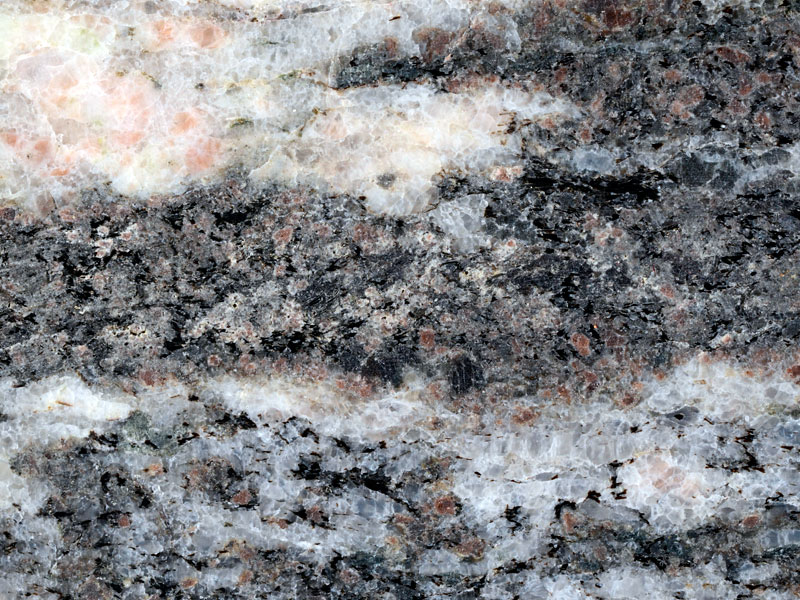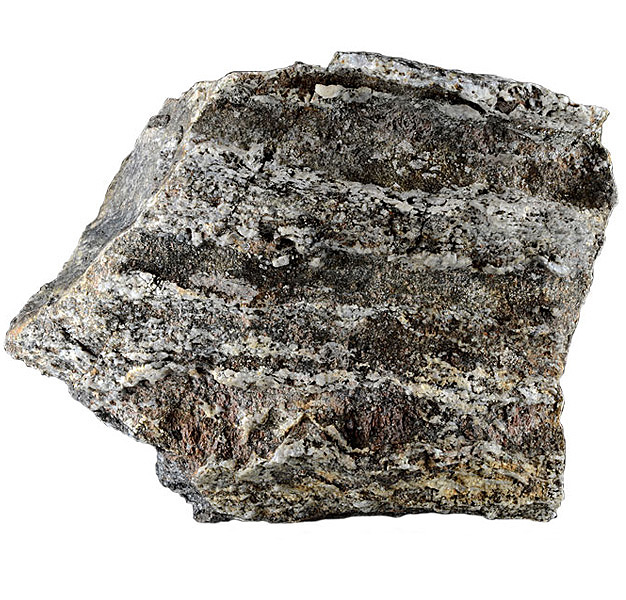
Fact sheet
This Lewisian rock is from Cleit Thorro, north west of Rodil on South Harris in the Western Isles of Scotland. It was originally a gabbro, intruded in the Archaean period, later metamorphosed in the Laxfordian orogeny when subjected to high temperature and pressure.
In thin section the rock contains large grains of garnet, pyroxene, scapolite, biotite and plagioclase, indicating deep burial and a very high grade of regional metamorphism. The garnet exhibits coronal textures, where rims of minerals reacted with other minerals in the rock as it cooled and decompressed on its journey back to the Earth’s surface following the peak of metamorphism. The rock thus contains evidence of both the prograde path (formed at the peak of metamorphism) and the retrograde path (reactions between minerals as they moved back towards the Earth’s surface).
The United Kingdom Virtual Microscope (UKVM) collection consists of igneous, sedimentary and metamorphic rocks from around the UK.
It is intended as a teaching resource, helping to tell the story of the common rock types and how they form, and reflecting the history of the UK at the margins of the continent of Europe. The collection is a series of teaching sets, for example igneous rocks from the North Atlantic Igneous Province and SW England; high-temperature metamorphic rocks from Scotland and low-temperature metamorphic rocks from Wales; and sedimentary rocks, including English limestones and sandstones.
